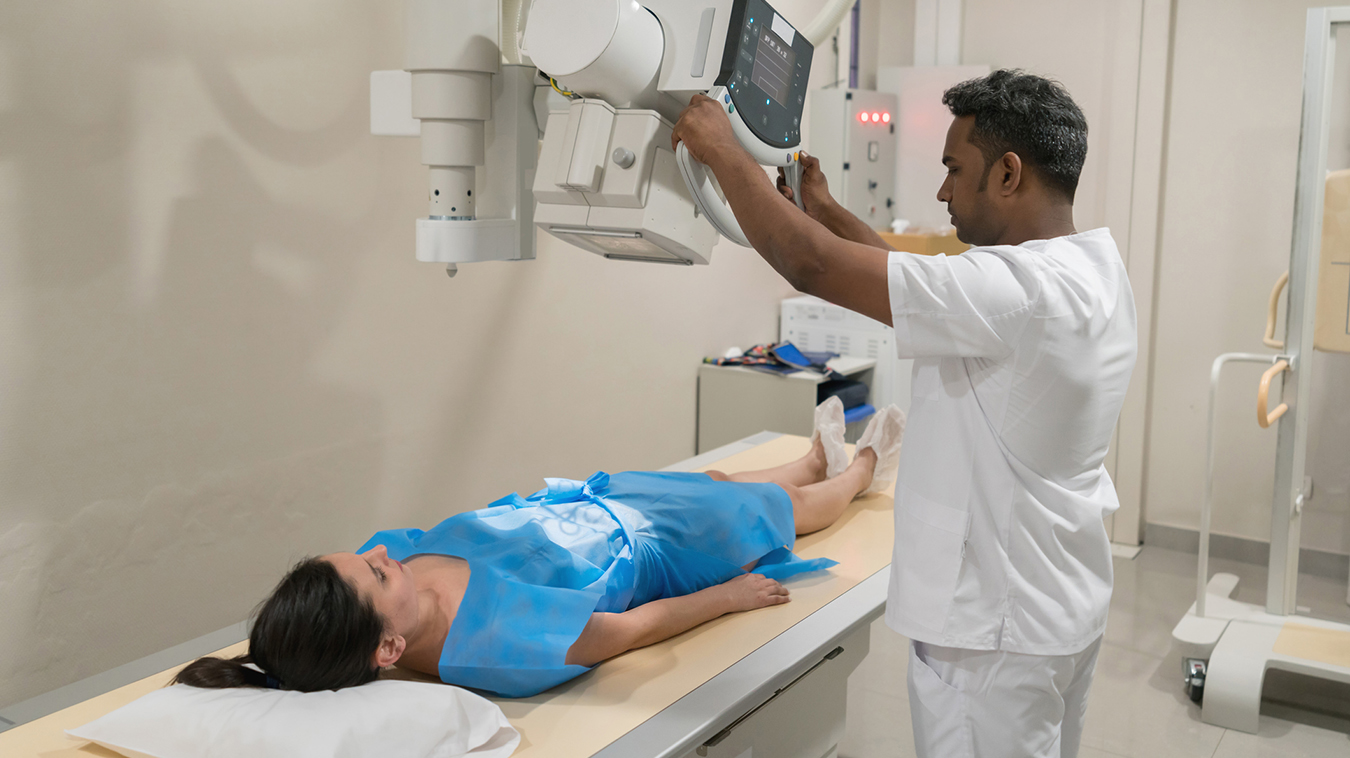TOLL FREE:
1-866-611-2665

Home MEDICAL IMAGING AND RADIATION SAFETY AT MAYFAIR
As a medical imaging provider, Mayfair Diagnostics is committed to providing our patients with the very best imaging experience possible. An important part of this process includes addressing any questions or concerns our patients may have.
We often receive questions from our patients about radiation safety during medical imaging, so we created this infosheet to illustrate how radiation from medical imaging compares to other sources of radiation exposure. Below we’ve also answered some common questions about this topic.
At Mayfair, we use two types of electromagnetic radiation to produce images of your body. The first type is X-rays, which are used in several of our exams, including:
During these procedures X-rays are passed through your body and some of them get absorbed. The X-rays not absorbed create the image, while those that are absorbed contribute to your radiation dose.
The second type of electromagnetic radiation, gamma rays, is used by nuclear medicine imaging. Gamma rays are introduced intravenously (in the form of a radiopharmaceutical) and emit outward to the detectors. These rays can also be combined with CT imaging, which uses X-rays, to produce very detailed images of your body.
All exposures of radiation are held to the standard of ALARA (as low as reasonably achievable) for all medical imaging exams that involve radiation. This means that no or low exposure is best, and the risk-benefit ratio should always be considered.
Radiation dosage is measured in millisieverts (mSv). When talking about the risks of radiation exposure, we are referring to possible side effects, such as the chance of developing cancer later in life. If medical imaging is recommended, your doctor will consider the benefits of an accurate diagnosis and compare it to the small risk of radiation exposure This chart from the Radiological Society of North America compares approximate background radiation levels and effective radiation doses in adults for common radiology procedures.
Health care governing bodies have created guidelines to ensure patient safety is a priority. Health care practitioners are encouraged to order X-rays only when necessary, and only when the benefit outweighs the small risk of exposure.
At Mayfair, we take each patient’s history to help us understand the reason for the exam and evaluate any potential risks. For exams with higher potential radiation exposure, our technologists check patient histories for records of previous imaging and coordinate with a radiologist to confirm the specific number and type of images. Lead shielding is also available to cover vulnerable areas of the body.
During each patient appointment, we make sure that patients understand the purpose of their exam, that we have their consent, and that consent is based on a true representation of the benefits and risks of each procedure.
For more information about the procedures offered at Mayfair Diagnostics clinics, please visit our services page.
Canadian Association of Medical Radiation Technologists (2021) “Communicating Risk and Benefit.” CAMRT Member Code of Ethics and Professional Conduct. Accessed July 27, 2021.
Canadian Association of Medical Radiation Technologists (2021) “Minimizing Patient Exposure.” CAMRT Member Code of Ethics and Professional Conduct. Accessed July 27, 2021.
Radiological Society of North America (2020) “Is diagnostic medical radiation safe?” www.radiologyinfo.org. Accessed July 27, 2021.
Radiological Society of North America (2019) “Radiation Dose in X-Ray and CT Exams.” www.radiologyinfo.org. Accessed July 27, 2021.
Radiological Society of North America (2019) “What is radiation dose?” www.radiologyinfo.org. Accessed July 27, 2021.
Our Refresh newsletter delivers the latest medical news, expert insights, and practical tips straight to your inbox, empowering you with knowledge to enhance patient care and stay informed.
By subscribing to our newsletter you understand and accept that we may share your information with vendors or other third parties who perform services on our behalf. The personal information collected may be stored, processed, and transferred to a country or region outside of Quebec.
Please read our privacy policy for more details.